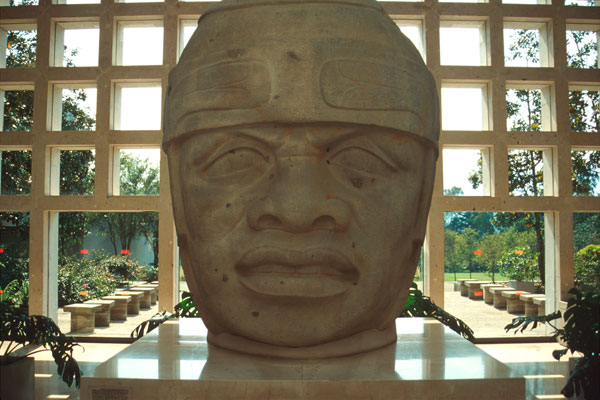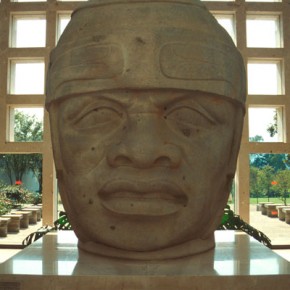The Olmecs, which means “people of rubber” in Nahuatl (the language of the Aztecs) began their civilization in southeastern Mexico between 1600 B.C. and 1400 B.C.
It wasn’t until this century that the Olmecs were acknowledged to be part of Mexico’s history. Researchers prior to this time attributed many of the discoveries now associated with the Olmecs to Mayan, Toltec, or even Chichimecan cultures. However, due to advances in scientific dating, scientists were able to determine that the art, artifacts, and miscellaneous objects found at archaeological sites were from a period of time earlier than the Maya.
It is believed that the Olmecs created their first cities between the Grijalva and Papaloan rivers, in the present-day Mexican states of Oaxaca, Veracruz, Chiapas, and Tabasco. The Olmecs had approximately forty-five different cities. However, there were three main cities. Some researchers claim that each city was a capital that controlled trade routes, provided defense from attacking tribes, and was responsible for the accumulation of natural resources in the area. The three cities were Tres Zapotes, La Venta, and Monte Alban. These cities were east of the Tuxtla Mountains and the Southern Mountain Range (Sierra Madre del Sur). The locations of these cities on a map show a triangle of control and power.
The geographical area of the Olmec civilization is varied in its features. It is close to the Gulf of Mexico and the Pacific Ocean on the Isthmus of Tehuantepec. It was a humid area and contained a varied landscape of jungles, plains, and mountains. The Olmecs established cities, trade routes over land and water, and most importantly, an agricultural system that could feed those who lived in those cities. Corn, beans, and squash were planted and harvested. They lived in a society based on a theocratic form of government (government ruled by or subject to religious authority). Religion played a major role in the lives of the Olmecs. Scientists and historians have unearthed altars and other sculptures that support this.
The most recognizable feature of the Olmec civilization is the creation of the enormous helmeted heads or “Colossal heads.” Infused with individuality, no two heads are alike and the helmet-like headdresses are adorned with distinctive elements, suggesting some leader, ruler or religious symbols. These enormous basalt portrait heads were carved from single blocks or boulders of volcanic basalt weighing up to twenty-four tons. The boulders were dragged or floated to their final destination from as far as sixty miles away. It has been estimated that moving a colossal head required the efforts of 1,500 people for three to four months.
Another common art form of the Olmecs was figurines made of jade and green-stone. Much of their art is surprisingly naturalistic while other pieces are fantastic anthropomorphic creatures, often highly stylized, and reflecting some religious meaning. Common motifs include almond-shaped eyes, down-turned mouths and a cleft head, which are seen in representations of “were-jaguars,” artifacts made of jaguar faces combined with human bodies. Chosen because the Olmecs believed it was the most powerful and feared animal, the jaguar represented a complex array of religious beliefs associated with the gods of rain and fertility.
Toward the middle of the first millennium B.C., the Olmecs mysteriously disappeared. Their disappearance was due to either another group gaining control over them or by changes in the climate that could not support their needs for food. However, the Olmecs played a very important role in shaping the civilizations that followed as many adopted their ideas, practices, and values. In addition to their influence on other Mesoamerican cultures, the Olmecs are credited by some researchers with many “firsts,” including bloodletting and perhaps human sacrifice, writing and epigraphy, and the invention of zero and the Mesoamerican calendar, and the Mesoamerican ballgame, as well as perhaps the compass. Some researchers and art historians even suggest that the Olmecs worshiped the predecessors of many of the later Mesoamerican deities.
-December 2010
- Cabeza Olmeca, En Villahermosa, Tabasco. Photo by Carlos Sanchez.
- Cabeza Olmeca, En Museo De Antropologia De Xalapa. Photo by Carlos Sanchez.






